NEWS & EVENTS

NEWS & EVENTS

Beijing Subway Line 3 Open to Traffic!
A rail transit line open to traffic can cheer up half of a city. On Dec. 15, 2024, the first phase of Beijing Subway Line 3 was open to traffic eventually. As the urban rail transit design leader in China and overall design unit of Beijing Subway Line 3, Beijing Urban Construction Design & Development Group Co., Limited (UCD) gives an impetus to Beijing to become a city possessing the longest urban rail transit operating mileage in China.
Since the two loop lines and one straight line in 1965, Beijing Subway Line 3 has undergone the planning for over half a century. In September, 2015, the National Development and Reform Commission gave an official written reply to the Beijing Urban Rail Transit Phase-II Construction Plan (2015~2021), consenting to the construction of Beijing Rail Transit Line 3. Starting from Tiancun Station and ending at Caogezhuang North Station, Line 3 stretches a total length of about 37.4 kilometers, all underground and with 27 stations set up.
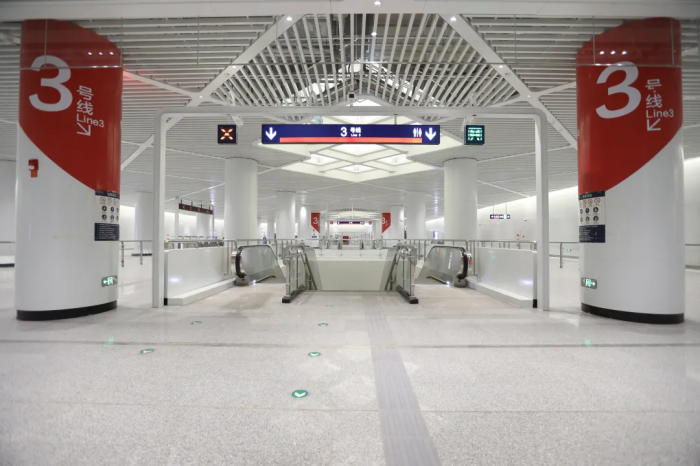
According to the written instructions of the People’s Government of Beijing Municipality, Line 3 was to be built in two stages, of which the phase-I project was to involve the Dongsi Shitiao Station——Caogezhuang North Station section to reach a total length of 20.8 kilometers and 15 stations and 1 car depot to build. Starting from Dongsi Shitiao, east second ring road in the west to Dongba North, Dongba Township in the east, the Dongsi Shitiao Station——Dongba North Station section open to traffic this time covers Dongcheng District and Chaoyang District, with its total length coming to 15.7 kilometers and 10 stations built, of which 6 are transfer stations and 1 is a car depot in Dongba.
In sixty years, UCD has used its graphic pen to make Beijing Subway Line 3 to become a brand-new passageway stretching across east and west and linking north and south, effectively filling the service gap northeastward in central urban area, which will become the primary function axis in regional urban service.
Serve People’s Livelihood
Subway Line 3 has set up the connection between the Beijing-Harbin Railway Station and the central urban area of Beijing. The Chaoyang Railway Station on the Beijing-Harbin Railway is one of Beijing’s seven major outward transportation hubs and is the important gateway for people of northeast China to enter Beijing. Subway Line 3 has connected Line 2 and Line 10, two major subway loop lines of Beijing and has linked Line 17, a north-south backbone line, Line 14, a semicircular line in southeast, and Line 12, a backbone line in the north. The line open to traffic has not only filled in the gap of there being no rail transit service at Chaoyang Railway Station, but has also boosted the rapid relief of passenger flows at the railway station and eased the difficulty for people to enter the railway station.
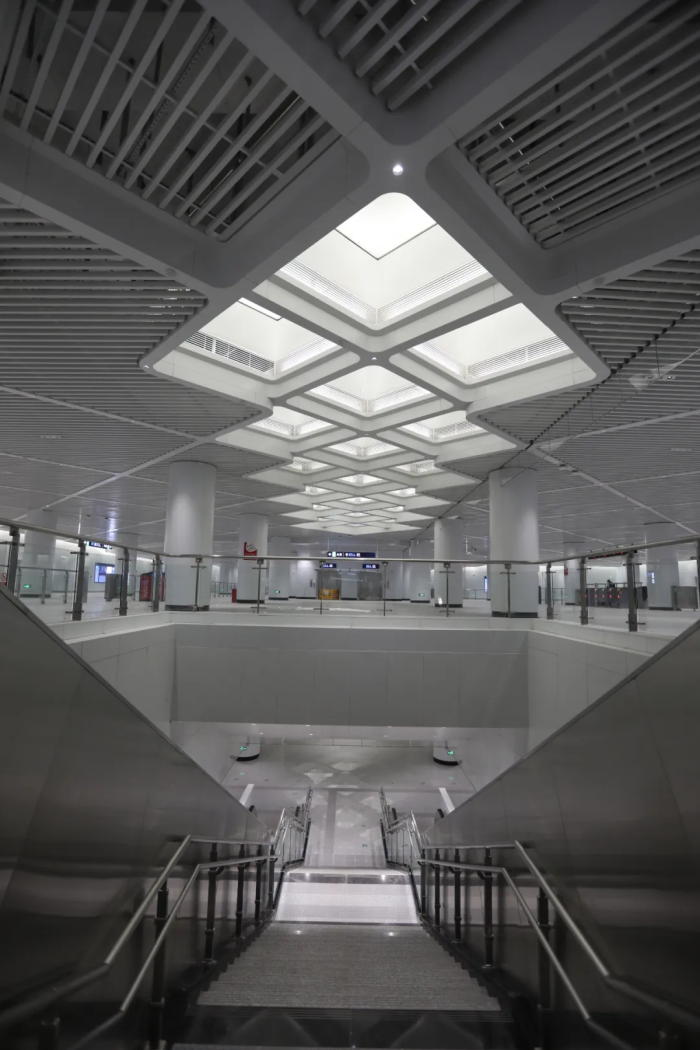
The Chaoyang Subway Station is situated underground the comprehensive transportation hub on the west side of the railway station and is the transfer station for Subway Line 3 and Line R4 to be built in the future. Stations for Line 3 and Line R4 are all island stations, with the first floor underground to be comprehensive transportation halls, second floor underground to be station halls, third floor and fourth floor underground to be platforms for Line 3 and Line R4, covering a total floor area of about 70000 square meters. In terms of design, the transfer hall of Chaoyang Subway Station is used to reduce passenger flows and intersections on its own. Getting out of the railway station, the passengers can come to the transfer hall on the first floor underground and walk to the escalator in the west end and then come down to the station hall on the second floor underground to enter the subway station through gate machines. The walking distance is about 180 meters and it takes 3 to 4 minutes. Getting out of the subway station, passengers can walk to the escalator in the east end to go up to the transfer hall on the first floor underground and continue to walk eastward to enter the railway station. The walking distance is about 60 meters and it takes 1 to 2 minutes. A convenient and unobstructed travel presents itself incisively and vividly.
Efficient and Intelligent
Subway Line 3 has opened a new chapter for the networked and high-quality rail transit operation in Beijing. Line 3 is the first rail transit line of Beijing adopting 4+4 flexible grouping automatic operation technology, with its maximum speed being 80km/h. During rush hours, the train runs in 4+4 grouping and, at off-peak hours the train shrinks to a 4-grouping operation to fit in with the imbalance of passenger flows, economizing on the operating costs while ensuring the 4min service level.
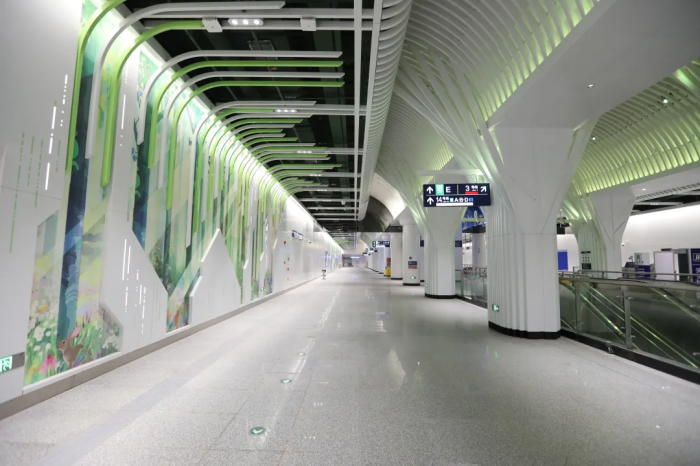
Line 3 has been connected with Line 12 in the early stage and with Line R4 and Line M101 in the long term, opening the prelude of the networked operation in Beijing, realizing the transformation from “passengers for transfer” to “trains for line change” and improving passengers’ travel experience. Line 3 and Line 12 share the intermediate repair base at the Dongba car depot to adequately integrate the resources of the two lines and flexibly deploy the trains on the two lines, thus improving the networked rail transit operating efficiency.
A Tribute to the Classic
Line 3 has brought about the new paradigm combining new construction with transformation with space as the core. In 1970s, Dongsi Shitiao Station of Line 3 was built synchronically with Line 2. The station was rated as one of the ten great buildings in 1980s for its stereoscopic traffic organizing and decoration design.
With the development of the city, the station previously reserved for Line 3 has not fit in with the demand for the construction of high-volume rail transportation. As a consequence, a new Line 3 platform has been built beneath the previous station. The roofing of the newly built platform is as deep as 23.5 meters, being the deepest hidden-excavated metro station in Beijing. Meanwhile, 14 holes have been opened respectively on the baseboard and on the side wall of the previously reserved Line 3 station, with the transformation being in big volume and difficulty. During the construction, the "lead screw + steel I-beam" process has been adopted to strengthen the support to reduce the disturbance and accurately penetrate the Subway Line 2 operating on the upper level.
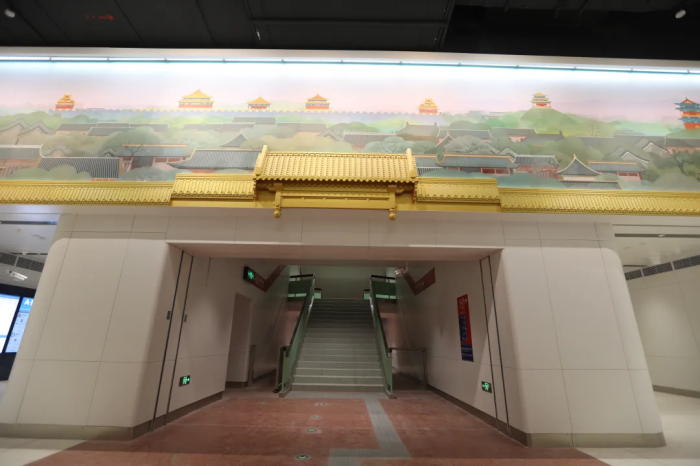
In terms of architectural design, two spacious and shared traffic transfer halls, 240 square meters or so in area and 6.35 meters in height, have been built by capitalizing on the former platform of Line 3, in which 9 sets of escalators have been set up to connect the halls for passengers from all directions to gather and transfer. In terms of decoration design, the existing hexagonal geometric sense of sequence and the sense of simplicity of classic terrazzo material have been continued to look like as if time and space halted.
Overcoming Difficulties
Problems related to the depth, danger and difficulty in subway construction in central urban area have been solved. There are numerous pipelines under the roads where Line 3 passes through and densely packed high-rise buildings nearby. The line traverses important municipal traffic points from east second ring road to east fifth ring road, multi-lane high-speed railways between Beijing and Harbin and two major subway loop lines of Beijing. There are 431 primary risks along the whole line, making it highly risky and most difficult to implement the projects on the whole.
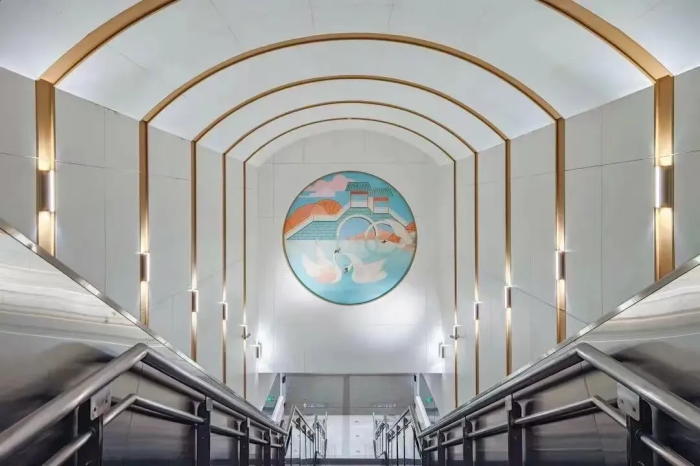
Restricted by environmental conditions, the percentage of hidden-excavated metro stations along the whole line is as high as 60%. There are 4 stations with the burial depth all surpassing 30 meters, of which the baseboard of the Workers’ Stadium Station is as deep as 36.8 meters. The Tuanjiehu Station is beneath the Changhong Bridge on the east third ring road. In the crevice of the detached island of the existing Line 10, the double-layer multi-span underground transfer hall, the largest ever in the history of line network construction, has been built, thus realizing the construction goal of bringing engineering risk and deformation of existing lines under control, with the construction being one of the most difficult among the lines in operation.
In-depth Integration
Urban vitality has been stimulated at various levels and in a multidimensional way. The in-depth integration of Line 3 with the city comprises four levels and five dimensions. The four levels include the integration of land use, transportation, landscape and space, while five dimensions focus on the integration of station affiliation, regional microcenter, car depot, section and pipe gallery.
The Workers’ Stadium Station is the transfer station for Line 3 and Line 17, with 3 entrances, 3 ventilation pavilions and 1 safety exit set up at the southwest quadrant to integrate with the underground first, second, third and fourth floors of the reconstructed sunken square of the Workers’ Stadium to promote the urban renewal of the Workers’ Stadium area and, in the meantime, the station is utilized to realize the extension of the Sanlitun Business Zone toward the Workers’ Stadium.
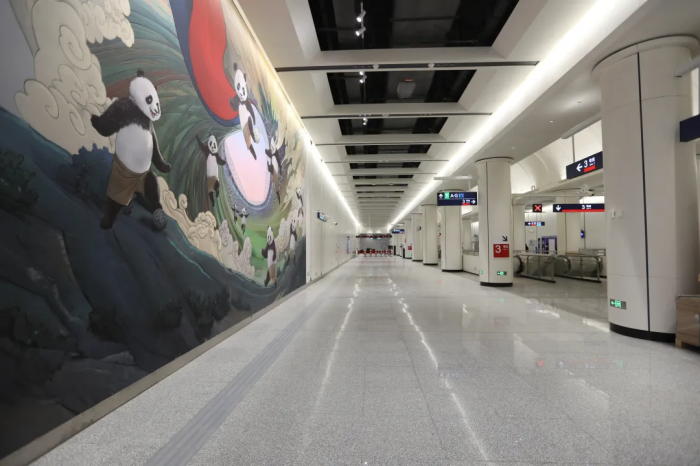
Dongba North Station is among the first microcenters in Chaoyang District, with two urban passage corridors set up to run through subway station halls, where passengers come to and go out of the area and flow in and out of the subway station integrate stereoscopically, providing new trains of thought for the building of the Dongba international exchange service area.
The upper-cover comprehensive utilization and the surrounding urban design are planned as a whole for Dongba car depot, the upper large urban complex is planned as a whole for open excavated intervals between Shifoying Station and Xinghuo Station, and the planning of the Bungalow Village Station as a whole is constructed synchronically with the pipe gallery to capitalize on the rail transit construction to lead the district development and urban renewal.
Classy Beijing
The broad perspective of a city is reflected in details. The decoration concept theme of Line 3 is “Classy Beijing”. Through the combination of Chinese traditional ancient architectural archway elements with the space of the station, the standard station draws on the form and concept of the Chinese traditional ancient architectural archway to revive the functions and traits of traditional ancient architecture and to continue the roles of traditional ancient architecture. On the basis of the standard station, the key station is endowed with different design elements to present its elegant demeanor.
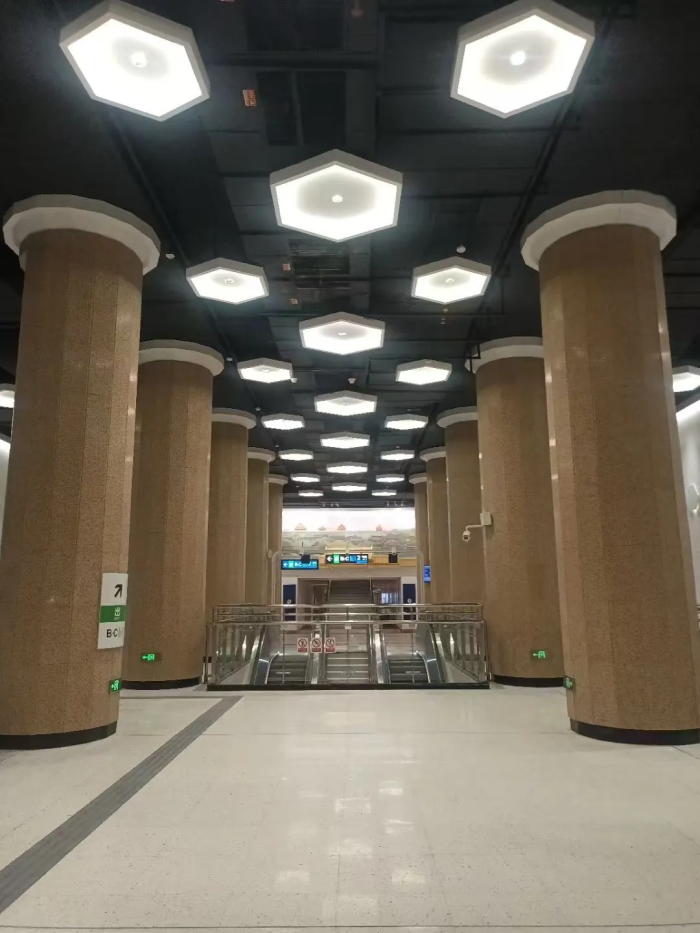
Access ways, the way from the station hall to the platforms and the passageway for transfer are all equipped with escalators and large-capacity elevators in the newly built station of Line 3, and the convenience for entry, exit and transfer has been greatly improved through the layout of facilities. At the same time, with the engineering difficulty overcome, the passageways for transfer from Line 3 are all equipped with accessible elevators and related signs have been increased to make the barrier-free transfer convenient for the elderly, the pregnant women, the children, the handicapped, etc. To fit in with the greying population featuring cities in the future, Line 3 reflects in all aspects the urban warmth of Beijing, capital of goodness.
Dust-laden for more than half a century and carrying the dreams of generations, Line 3 has witnessed the urban rail transit growing out of nothing and developing at top speed in China and has now been built. It will take us to a new journey of greener and high-quality development.